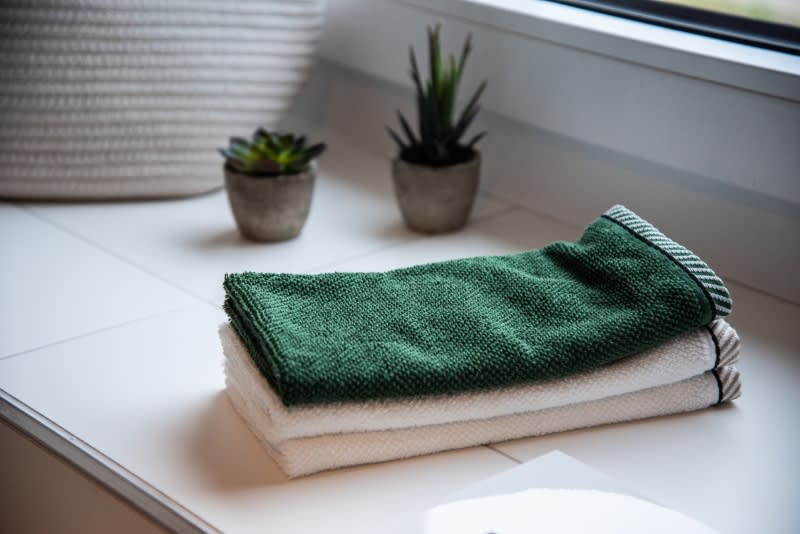Yes, Natural Shampoos and Conditioners Do Make a Difference

If you’ve been anywhere near a store or shopping site in the last few years, you’ve probably seen tons of products with “natural” emblazoned on their labels. But when it comes to hair care products, what does “natural” even mean?
We know it can be hard to cut through the marketing to figure out what’s actually in the products you put on your head. So we wrote this guide to natural shampoo and conditioner to help you decide if it’s worth shilling out a few extra bucks for these products.
What is a natural shampoo or natural conditioner?
The word “natural” might make you think of a muddy, mysterious substance best kept locked away in a Mason jar, but natural hair care products aren’t what they used to be. Now that avoiding harsh chemicals is so popular, companies have found ways to produce products that don’t contain unnecessary additives but still look and feel a lot like what you’re used to using the shower.
So, a natural shampoo or conditioner is one that uses natural (typically plant-based) ingredients, and doesn’t include damaging preservatives and other harmful chemicals. That said, there aren’t any strict rules around when companies can describe their products as “natural,” at least in the U.S. For example, if your product contains 1% natural saw palmetto and 99% additives, you can still legally put “natural” on the label. By contrast, you can’t label a shampoo (or any other personal care product) “organic” unless it contains at least 95% certified organic ingredients.
So how do you know if the “natural” shampoo or conditioner you’re considering buying is actually natural? It’s simple: Just read the ingredient list.
What ingredients should I look out for?
Okay, that’s a bit of an understatement. Reading a shampoo label and actually understanding it is no small feat. Luckily, if you’re looking for natural shampoo or conditioner, one easy way to tell that a product’s not right for you is if it has a ton of impossible-to-pronounce ingredients listed on the back.
A truly natural product should have a short ingredient list mostly composed of words you can understand, like “green tea” or “coconut oil.” If you see something that looks fishy, check if the source of the ingredient is listed—sometimes you’ll find that a suspicious ingredient is derived from nature, in which case it should be fine to use.
What ingredients should I avoid?
You probably don’t have enough free time on your hands to memorize every chemical that lets you know when a product’s not natural. That’s why we narrowed them down to this list of the most popular harmful additives to avoid when you’re shampoo or conditioner shopping. We call them “harmful” because they’re proven to have negative effects, not just because they’re not natural. DMDM hydantoin, for example, can release formaldehyde into your hair care products over time.
They are:
- coal tar dyes
- DMDM hydantoin
- Imidazolidinyl
- parabens
- phthalates
- triethanolamine
What are the benefits of natural shampoo and conditioner?
If you’re going to do the work of finding a genuinely natural product, you’ll probably want to make sure it’s worth the effort first. Well, the main benefit of using a natural shampoo or conditioner is pretty obvious—if you can understand the ingredient list, then you actually know what you’re putting in your hair.
Even if you’re not an especially health-conscious person, you should still care about what’s in the products you use, especially if your hair is thinning. That’s because better ingredients will lead to healthier hair, and healthier hair is less likely to fall out on top of any hair loss from male pattern baldness. Plus, when your hair isn’t weighed down by unnecessary additives, it looks fuller.
Are there any downsides to using natural shampoo and conditioner?
Of course, switching to natural hair products won’t be all smooth sailing. For one thing, lots of guys who start using natural shampoo get confused when it doesn’t lather up like they’re used to. That’s because many companies add ingredients, such as sodium lauryl sulfate, to their shampoos to make them suds up more.
The fact is that less suds doesn’t mean your hair is getting less clean. But if you’re using a natural shampoo and find yourself missing the lather, you could try mixing it with water (either in the bottle or on your head) to encourage it to suds up.
Another thing to note is that, depending on your hair type, your hair might still feel a little oily after a wash with natural shampoo. If that’s the case for you, just be sure to shampoo twice every time (yup, some bottles say “repeat” for a reason). If you’re on the opposite end of the spectrum and natural conditioner leaves your hair feeling dry, try following up with a leave-in conditioner or another moisturizing type of conditioner, or skipping shampoo entirely and just washing with conditioner.
No matter what your hair type is, keep in mind that it may take some time for your scalp to adjust to the new products. Try not to give up on a natural shampoo or conditioner after just one or two washes.
To sum all this up, natural shampoo and conditioner can help your hair look stronger, healthier, and fuller. It may take some time to find the right products for you, and to get used to them once you do, but a little patience could be all it takes to make the most of your mane.
The information provided in this article is not a substitute for professional medical advice, diagnosis, or treatment. You should not rely upon the content provided in this article for specific medical advice. If you have any questions or concerns, please talk to your doctor.
Photo by Sven Mieke on Unsplash